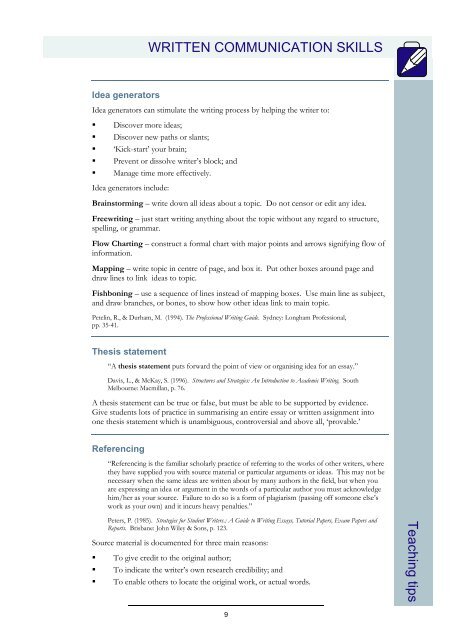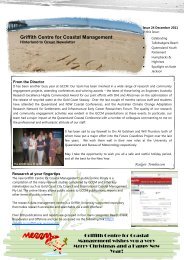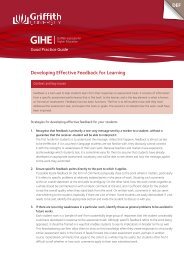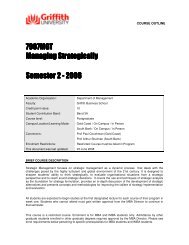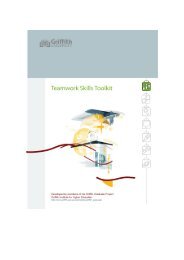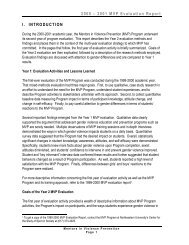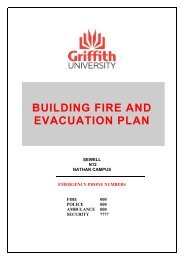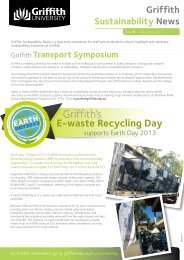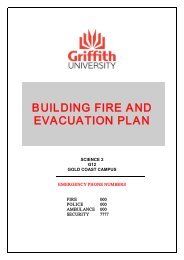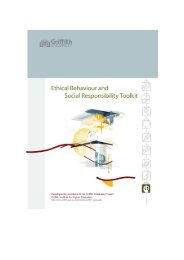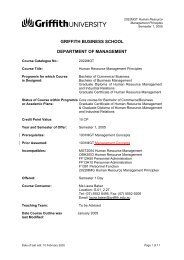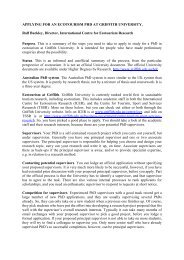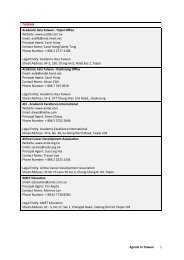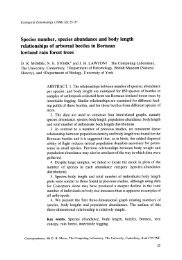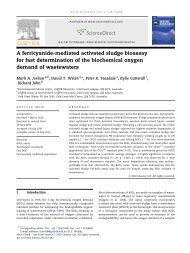Purpose of this Toolkit - Griffith University
Purpose of this Toolkit - Griffith University
Purpose of this Toolkit - Griffith University
Create successful ePaper yourself
Turn your PDF publications into a flip-book with our unique Google optimized e-Paper software.
WRITTEN COMMUNICATION SKILLS<br />
Idea generators<br />
Idea generators can stimulate the writing process by helping the writer to:<br />
• Discover more ideas;<br />
• Discover new paths or slants;<br />
• ‘Kick-start’ your brain;<br />
• Prevent or dissolve writer’s block; and<br />
• Manage time more effectively.<br />
Idea generators include:<br />
Brainstorming – write down all ideas about a topic. Do not censor or edit any idea.<br />
Freewriting – just start writing anything about the topic without any regard to structure,<br />
spelling, or grammar.<br />
Flow Charting – construct a formal chart with major points and arrows signifying flow <strong>of</strong><br />
information.<br />
Mapping – write topic in centre <strong>of</strong> page, and box it. Put other boxes around page and<br />
draw lines to link ideas to topic.<br />
Fishboning – use a sequence <strong>of</strong> lines instead <strong>of</strong> mapping boxes. Use main line as subject,<br />
and draw branches, or bones, to show how other ideas link to main topic.<br />
Petelin, R., & Durham, M. (1994). The Pr<strong>of</strong>essional Writing Guide. Sydney: Longham Pr<strong>of</strong>essional,<br />
pp. 35-41.<br />
Thesis statement<br />
“A thesis statement puts forward the point <strong>of</strong> view or organising idea for an essay.”<br />
Davis, L., & McKay, S. (1996). Structures and Strategies: An Introduction to Academic Writing. South<br />
Melbourne: Macmillan, p. 76.<br />
A thesis statement can be true or false, but must be able to be supported by evidence.<br />
Give students lots <strong>of</strong> practice in summarising an entire essay or written assignment into<br />
one thesis statement which is unambiguous, controversial and above all, ‘provable.’<br />
Referencing<br />
“Referencing is the familiar scholarly practice <strong>of</strong> referring to the works <strong>of</strong> other writers, where<br />
they have supplied you with source material or particular arguments or ideas. This may not be<br />
necessary when the same ideas are written about by many authors in the field, but when you<br />
are expressing an idea or argument in the words <strong>of</strong> a particular author you must acknowledge<br />
him/her as your source. Failure to do so is a form <strong>of</strong> plagiarism (passing <strong>of</strong>f someone else’s<br />
work as your own) and it incurs heavy penalties.”<br />
Peters, P. (1985). Strategies for Student Writers.: A Guide to Writing Essays, Tutorial Papers, Exam Papers and<br />
Reports. Brisbane: John Wiley & Sons, p. 123.<br />
Source material is documented for three main reasons:<br />
• To give credit to the original author;<br />
• To indicate the writer’s own research credibility; and<br />
• To enable others to locate the original work, or actual words.<br />
Teaching tips<br />
9


